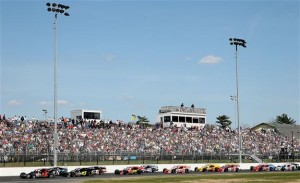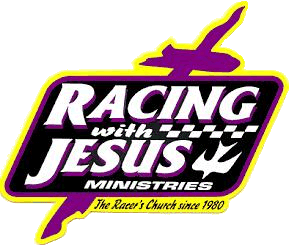“Remember when … ”

The Whelen Modified Tour on track for the Spring Sizzler 200 at Stafford on April 28 (Photo: Alex Trautwig/Getty Images for NASCAR)
It’s a familiar mantra to anyone who spends any amount of time around short track racing.
“Remember when the grandstands were overflowing?”
“Remember when the purses were huge?”
“Remember how many cars showed up to race?”
At Stafford Motor Speedway they like to call their Spring Sizzler “The Greatest Race in the History of Spring.” though some around the Whelen Modified Tour were questioning that title when only 26 cars showed up for the division’s second race of the season on April 28 in Stafford.
It was a common refrain around the track over the weekend: “Only 26 cars are here.”
Saturday the Whelen Modified Tour heads to Monadnock Speedway and as of Wednesday there were 27 cars on the entry list.
And surely the critics will sing of the perceived folly that the Whelen Modified Tour’s car count has become.
But is it really that bad or has it become, like so many other things in short track racing, something that just has to be complained about for the sake of complaining about it?
One can live in the past, yearn for those days and judge everything based on that glorious time, but setting the measuring line for today’s success on what happened 30 years ago just doesn’t work.
Thirty cars or less for the Whelen Modified Tour is what reality is, circa 2013. That isn’t going to change any time soon.
There’s no denying that average car count can absolutely be a proper barometer for the overall health of any racing divisions. Dwindling cars counts are not good, and the fact that the car counts on the Modified Tour have steadily been dropping over the last decade is not a good sign for the future of the division.
Though the fact is, it doesn’t mean the product on the track suffers. It can actually be argued that the product on the track is improved because of what reality dictates today. Car counts shouldn’t be used to knock the product being put forth on the track in the here and now.
At the present time on the Whelen Modified Tour there are 11 drivers competing full-time in the division that are a legitimate threats to win each week.
That’s not saying there are four that are heavy favorites, three that can be contenders and four that might just sneak a win out. That’s saying that at the drop of the green flag for any Whelen Modified Tour event right now there are 11 drivers that each have seemingly the same odds to win. And add to that another four or five beyond that 11 that fall into the category of guys that could grab a victory if everything fell right.
Those are numbers that stacked up mean fans in the grandstands are getting to see a quality product for their ticket price no matter how many cars in total show up to compete. There aren’t too many divisions in racing – short track or otherwise – that can boast of having fields where more than a third of the competitors each week are seemingly on equal ground to grab a victory.
And it has shown through in the product dating back to last year. One can knock the car counts, but the racing on track has been far from staid.
The season opener at Thompson International Speedway on April 14 saw battling in the top-10 all race long, a race winning lead change by Mike Stefanik with 10 laps remaining and the top-five pushing on each other for positions right to the checkered flag.
At Stafford on April 28, Bobby Santos III had the dominant car throughout the day, but behind him the racing from second to 12th proved heated and dramatic from the start to the checkered.
And sometimes those around short track racing put so much stock in car count numbers that they forget that often times bigger car count numbers can add up to awful racing on the track.
Sure, adding five more competitive cars to the field might make the product even better, but more often than not when you’re adding to the field it’s with less than competitive cars and teams. And those additions usually add up to more wrecks, more cautions and the sapping of competition between the front runners.
Bigger isn’t always better and bigger car counts on the Modified Tour right now would like do little or nothing to improve the racing fans are seeing.



















what really matters is the hugh tix prices – not worth the money to watch this tour.
If you are so sure of the elite eleven, can I ask who is driver #12 on your list Shawn? That aside, I am still annoyed by the 10% Connecticut ticket tax that the racetracks chose not to fight, thus making them a partners with the state in the high ticket prices that Lauren alluded to…
I agree Shawn: The racing on the WMT is better than ever. I never thought I would say this, but smaller fields equals less cautions and better racing. The race at Thompson was as good as any race you will see this year. That brings into question why only 3 WMT races @ Thompson in 2013.
Nover,
I’ll give you the 11, you can come up with your own No. 12. In no particular order, Doug Coby, Bobby Santos III, Donny Lia, Ryan Preece, Mike Stefanik, Ted Christopher, Ron Silk, Rowan Pennink, Justin Bonsignore, Jimmy Blewett and Todd Szegedy.
Shawn, that is a lucid, intelligent, and well thought out ‘Elite Eleven’… I won’t overrule, but given that 11, my cousin Vinny and I will take Chuck Hossfeld and Woody Pitkat as our #12 and 13 in no particular order…
I’ll say this, Chuck would it 12 instead of 11 for me if he was running full-time. That said, Chuck and Woody are definitely in my 12-16.